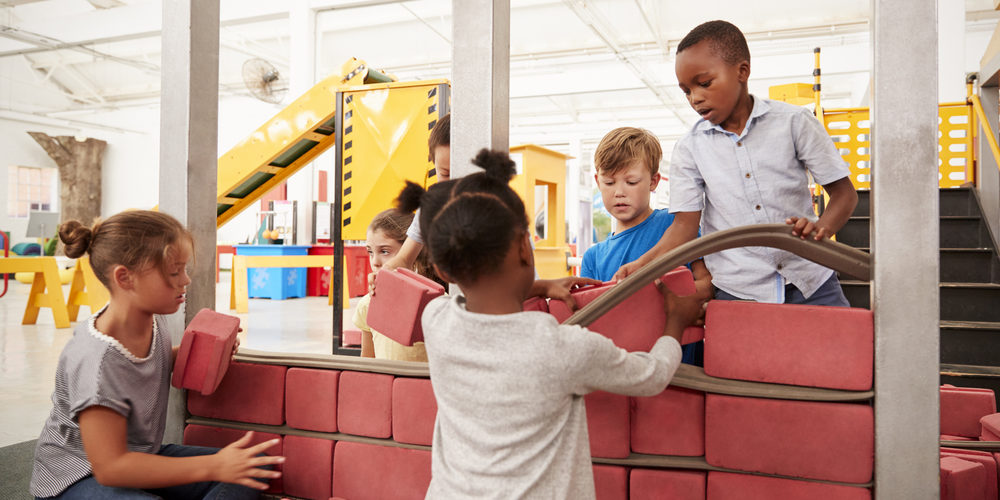Education begins from the moment a child opens their eyes and starts taking in the world. Children, no matter how young, are taking in the world around them and learning from it. As they get older, they desire to explore the world. Additionally, they seek to gain some independence from their parents. These things are what the Montessori toddler classroom focuses on.
Are you looking to enroll your child into a Montessori toddler classroom? Then here is what you need to know.
The Goals of the Toddler Classroom
Toddlers are classified as children who are just learning to walk or toddle along, which is often around 1 years old. Toddler ages are usually between 1-3 years old. During this time, parents celebrate many physical and mental milestones, such as smiling, rolling over, sitting up, waving, crawling, babbling, walking, and simple games.
You could say that the first three years of life are ones of rapid development. Your child takes in so much information about their environment through their senses. Their success later in life is built on the foundation they gain during these very formative years. That’s why it’s so important to build curiosity during the toddler years.
In the Montessori Toddler classroom, the curriculum focuses on these emerging interests and skills. Therefore, the course outline is different from child to child, as customized by their teachers.
During observations of the class, the teachers will see who is ready for new materials and will search for ways to stimulate the children’s curiosity for the best learning outcomes.
The main goals of the Montessori Toddler classroom are:
- Developing basic language skills
- Problem solving
- Visual discrimination
- Physical coordination
- Concentration
This is done by building a curriculum that establishes a daily routine then builds upon it. If your child continues on into other classrooms at Fishtown Montessori or elsewhere, the routine generally remains the same. Within that routine, learning activities are introduced to promote further learning:
- Self-care activities, such as using the bathroom, washing one’s hands, dressing, and making foods, all according to the child’s personal capacity
- Large-motor skills, like walking, running, balancing, climbing steps, and jumping
- Fine-motor skills, like grasping, reaching, using utensils, drawing, transferring objects, and more
- Caring for the environment: prepping food, cleaning messes, taking care of plants and animals
- Social skills: interacting with peers, adults, and teachers throughout the day
- Language skills, such as describing what is being done, conversations, singing, discussions, and more
The Toddler Classroom Curriculum
Between the ages of 18 months and 3 years, children crave the ability to do things on their own. This might be why your child snaps at you when you try to help them do something, when they know they can do it on their own. Within the Montessori classroom, a focus of the curriculum is helping children gain confidence in a vast number of daily activities. This helps them gain a sense of competence.
Within this language-rich environment, the child is spoken to as an adult instead of baby talk. Plus, they are given materials that encourage language learning, such as picture books, vocabulary cards, and more. Adults communicate with the toddlers regularly, but they also provide books to read aloud.
The learning environment of the Montessori Toddler classroom is unique. Although it is a bit like traditional kindergarten, the Montessori Toddler classroom doesn’t force children to do an activity. Rather, children are allowed to work independently or together on certain activities. They are free to express themselves and to be as creative as they wish.
Self-care is fostered by providing child-sized furniture, as well as accessible toileting items. The children will find themselves able to use the toilet and wash their hands without the assistance of an adult. They are also guided to wash their hands and blow their nose whenever necessary.
Children can also exercise independence by preparing for naps then rising whenever they want. Again, they are not forced to stay on their mat when they are awake. Instead, they can opt to work on another project or play with friends in a respectful manner.
Toddler Classroom Environment and Materials
Since toddlers crave freedom, the environment of the Toddler classroom is prepared to maximize on their desires. The setting has child-sized furniture and is welcoming and bright. There are soft, cushioned rugs and seats. Books are available on accessible shelves and baskets. The color scheme of the furniture and toys is muted, adding to the peaceful atmosphere.
Most of all, you won’t see any clutter or disorganization.
Learning materials are available whenever the children want them. Because of the community within the classroom, children might opt to play alone with their chosen material or partner up with others.
Some of the materials involved include:
- Items for practicing movement control, such as glasses, utensils, and scoops
- Stringing beads
- Lacing cards
- Rods, blocks, and wooden balls (Pink tower, small cylinder blocks)
- Dressing frames
- Sponges and towels for washing and scrubbing
- Cloth napkins to fold and wash
- Wooden puzzles
- Picture matching and sequencing
- Sandpaper letters and numbers
- Stacking and nesting cubes
As you can see, there are plenty of materials to cover the curriculum. While all materials won’t always be available, the children are never bored.
Ready to Enroll Your Children in the Toddler Classroom?
The Montessori Toddler classroom is an exciting yet relaxing place, where your toddler can exercise their mind and body. Within this environment, your toddler will develop independence, creativity, and curiosity. This will give them an edge in their later education and life, and it can also bring some peace and harmony to your household.
Fishtown Montessori is a superior Montessori school in Philadelphia for younger children. If you are interested in enrolling your toddler into one of our programs, give us a call to schedule your tour.






